Heading out the door? Read this article on the new Outside+ app available now on iOS devices for members! Download the app.
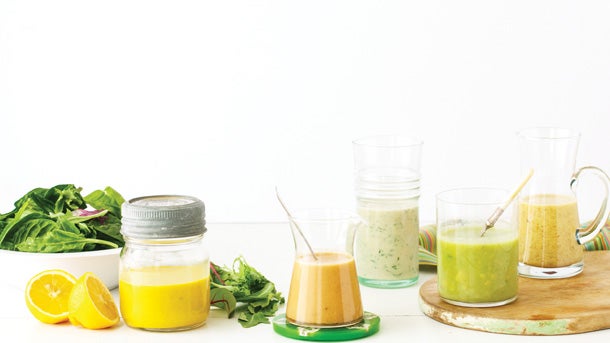
Why Make Your Own?
One simple change you can make to drastically improve your health is to remove any and all processed sauces, dips and dressings from your diet. Store-bought dressings in particular are often lacking in nutrients and fiber, and are high in unpronounceable preservatives, salt, sugar and unnecessary, unhealthy fats. In addition, they often taste… well, artificial. Instead, try these easy, nutrient-dense alternatives that will make any salad the focal point of your meal.
What You Will Need
- Cutting board
- Chef’s knife
- 16-oz Mason jar with lid
- Measuring cups and spoons
- Rasp or microplane
- Reamer
See also 5 Simple Salad Dressings.
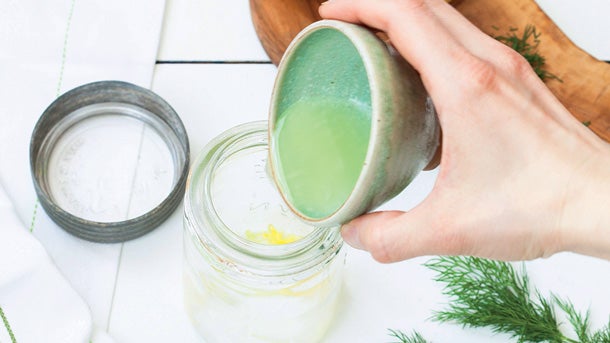
1. Get Started
To get started, grab a jar with a lid that holds about two cups of liquid. Mason jars work great for this task.
See also Spicy Thai Peanut Dressing.
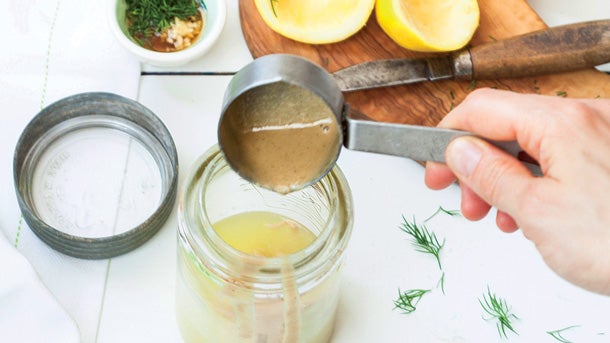
2. To Mix
To mix the dressing, just give the jar a vigorous shake. As a general rule of thumb, when creating your own dressing, you will want to include an acid, a fat, an emulsifier and flavor enhancers.
See also Vegan Caesar Dressing.
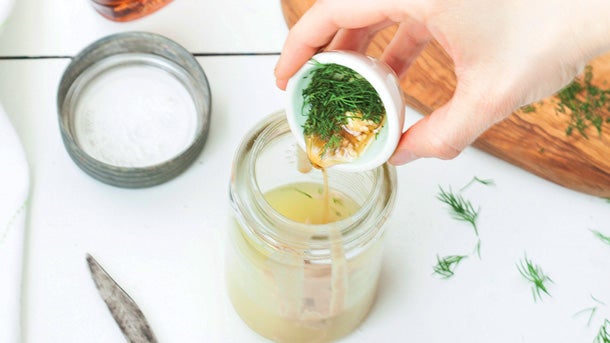
3. The Acid
The acid can be any whole or minimally processed food that has a tangy, tart taste to it. Lime, lemon, orange and grapefruit juices are always fan favorites and contain a plethora of phytochemicals. Minimally processed vinegars, like apple cider, balsamic, red wine or rice vinegar, are also good choices and are noted to potentially have health benefits for weight maintenance, lowering blood pressure and cholesterol, and regulating blood sugar levels.
See also Tahini Dill Dressing.
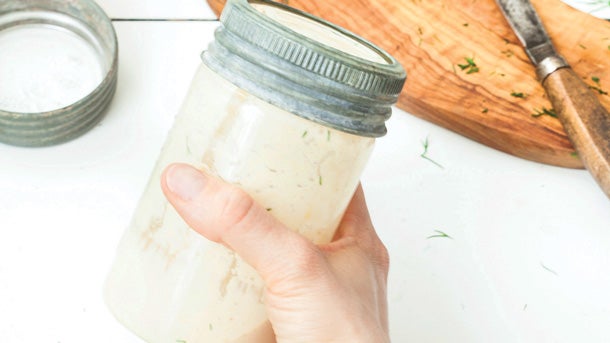
4.The Fat
The next step is adding in a fat. Here, you’ll want to select heart- and brain-healthy fats such as tahini paste, avocado and/or nut butters and high-quality, cold-pressed oils like extra-virgin olive oil, avocado oil, hemp oil and flaxseed oil.
5. The Emulsifier
Then there are the emulsifiers – in our case, hummus, honey and tahini. This is the element that helps the fat and the acid blend together and keeps the dressing from separating.
See also Avocado Lime Dressing.
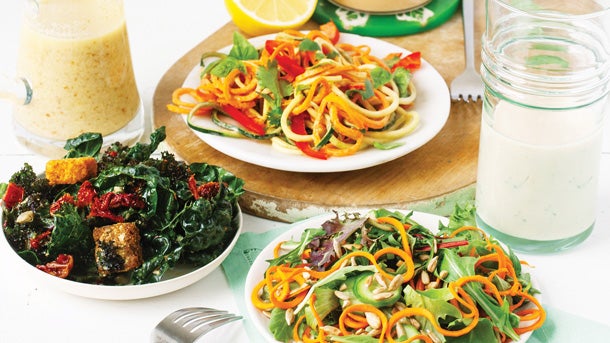
6. The Flavor Enhancers
Last up are the flavor enhancers that make each dressing unique. Fresh herbs, garlic, ginger and chile peppers are a few examples of whole foods that nutritiously flavor dressings without any added fat, salt or sugar.
See also Creamy Curry Dressing.